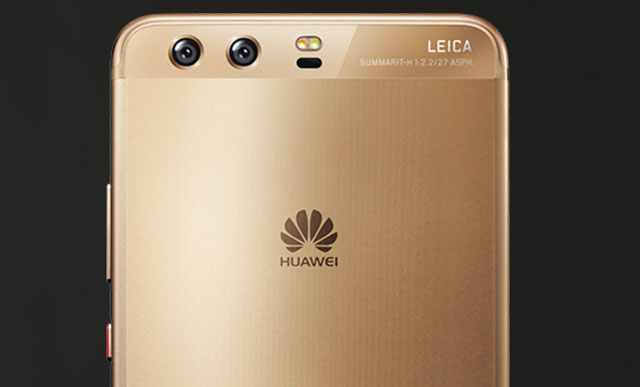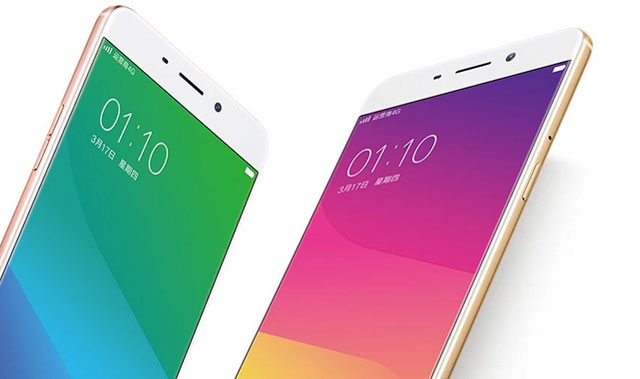
Cheap handsets helped Chinese smartphone makers climb to the top of their home market. Now they’re hoping cutting-edge technology will take them global.
Shrugging off a reputation for knockoffs, the country’s biggest brands are starting to push the envelope in everything from gadget specs to marketing campaigns.
Huawei Technologies has declared open-season on Apple and Samsung Electronics, vowing to overtake the market champions within half a decade.
Oppo used Barcelona’s Mobile World Congress to unveil its most advanced camera technology yet, signalling a new maturity. And Xiaomi, the country’s most valuable start-up, now designs microchip processors in-house.
China’s largest phone makers have gained a reputation at home for inexpensive yet just-as-good devices. That approach helped Oppo, Huawei and Vivo take the top three spots in the world’s largest mobile market for the first time in 2016, relegating Apple to fourth and pushing Samsung out of the top five.
Now they’re keen to demonstrate they’re not just fast adopters but innovators as well, capable of devices that can stand alongside the latest from the world’s two largest players.
The trio are becoming aggressors on foreign soil from Southeast Asia to India, where Chinese labels occupied four of the top five spots in 2016’s final quarter.
“The top Chinese makers have their eyes fixed on overseas markets as competition in China heats up,” said Jia Mo, an analyst from industry consultancy Canalys. “They are chasing each other to debut new technologies and innovations because that’s key to expanding globally.”
To be sure, Chinese brands have yet to gain worldwide acceptance. While Lenovo, Xiaomi and Oppo phones are popular in parts of Asia, few have yet made significant strides in developed markets dominated by Apple and Samsung. It remains to be seen whether the phones to be unveiled this week from Barcelona to Beijing live up to their billing.

But they’re coming after a series of rapid-fire improvements over the past year that have won over Chinese consumers and left foreign labels also-rans in a market they dominated for a decade. By going steadily up-scale and employing vast retail networks, local names have rapidly displaced iPhones and Samsung Galaxy devices.
The speed with which Chinese brands are packing in the bells and whistles has stunned industry observers, with no let-up in sight. Seven of the top 10 Chinese patent-appliers last year make smartphones, according to the State Intellectual Property Office. Of those, Oppo, Huawei and Xiaomi filed close to 12 000 applications or a third of the total, the data shows.
“In terms of technology and innovation, Chinese players are very close to industry leaders like Samsung,” said Kitty Fok, a research director at IDC China. “China’s gigantic mobile Internet market helped to boost online services, which require hardware with better performance. Many local players caught the opportunity to shake off the copycat label.”
Leading the charge is Guangdong Oppo Electronics, which made features like rapid charging, low-light photography and 6GB memory standard (the iPhone still lacks quick-charging). The current Chinese market leader is focusing its energies on the camera, targeting selfie-crazy youths as well as amateur snappers.
Oppo unveiled what it calls its most advanced mobile photography technology yet. Its “go five times further” Barcelona tagline referred to an optical zoom technique that combines telephoto and wide-angle lenses and a specially designed prism with software to achieve a 5x zoom effect.
Huawei — number 3 worldwide after Samsung and Apple — also aimed to make a splash in Barcelona with its marquee P10.

The company unveiled one of the first dual-camera smartphones with an organic light-emitting diode screen a year ago — thus stealing a march on Apple, which is said to be adopting the next-generation displays only later this year.
This week, the Shenzhen-based company touted an even more advanced gadget, a roughly $700 device capable of identifying faces and adjusting angles and lighting on the fly.
Huawei’s shown no lack of confidence: it vowed last year to displace Apple and Samsung from the global top in five years. The Chinese company raised eyebrows when it sued Samsung in the US and China for patent infringement. Samsung has counter-sued.
Unusually for a Chinese consumer brand, it’s also exhibited marketing savvy, teaming with Leica and enlisting Hollywood star Scarlett Johanssen to plug devices.
This week, it featured the storied camera-maker again, alongside colour pioneer Pantone and GoPro, whose mobile editing app will come pre-installed on the P10.
Even Xiaomi, which once topped Chinese sales by undercutting the competition and building an online user community, is going up-market. In October, it showed off the Mi Mix concept phone, developed with famed designer Philippe Starck, featuring a ceramic body and bezel-less screen.
Xiaomi will this week showcase the first phones using its “Pinecone” chipsets, foregoing those from Qualcomm and Mediatek. It will join a select club that includes Huawei, Apple and Samsung. Employing the chipset, which was developed with the Datang Group, not only helps save on cost but also lets Xiaomi tailor the processor to unique phone features.
“Technology innovation will be a key focus for Chinese players this year amid surging cost in the supply chain and an even more brutal fight over the retail channel,” Canalys’s Jia said. — (c) 2017 Bloomberg LP

